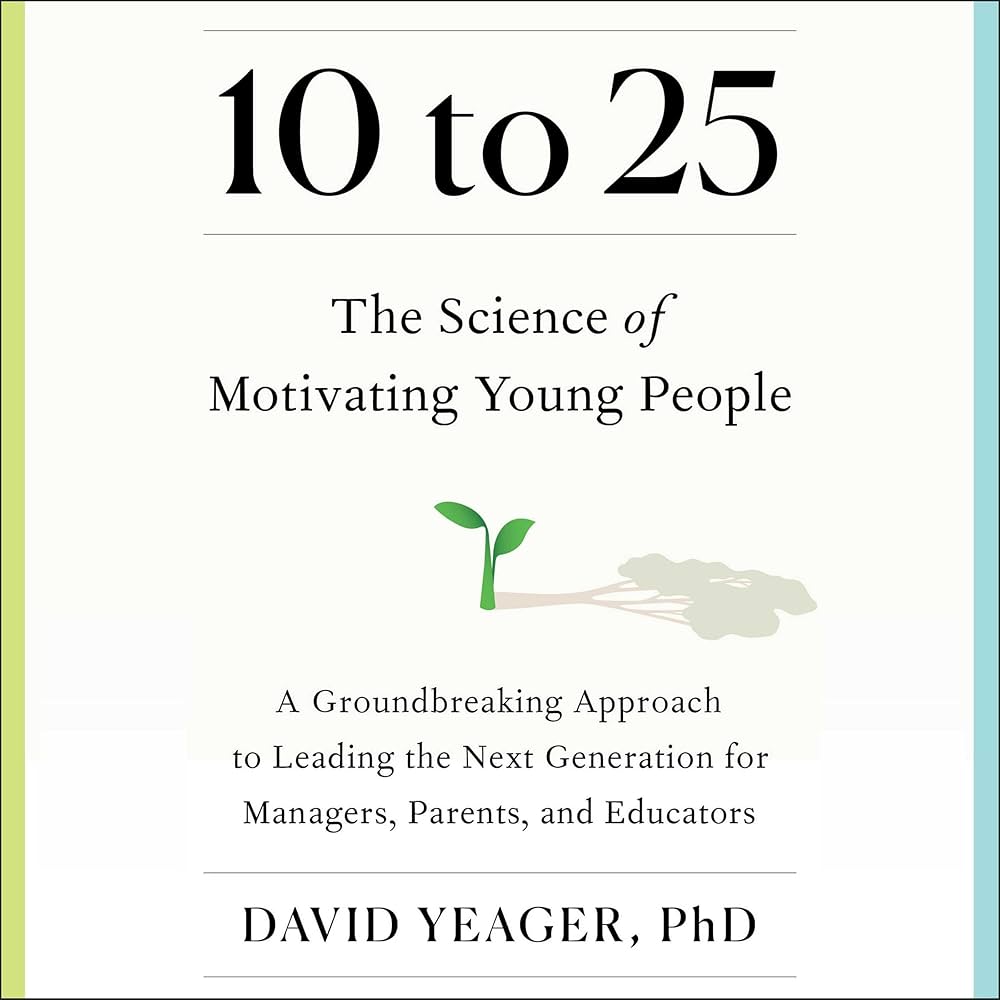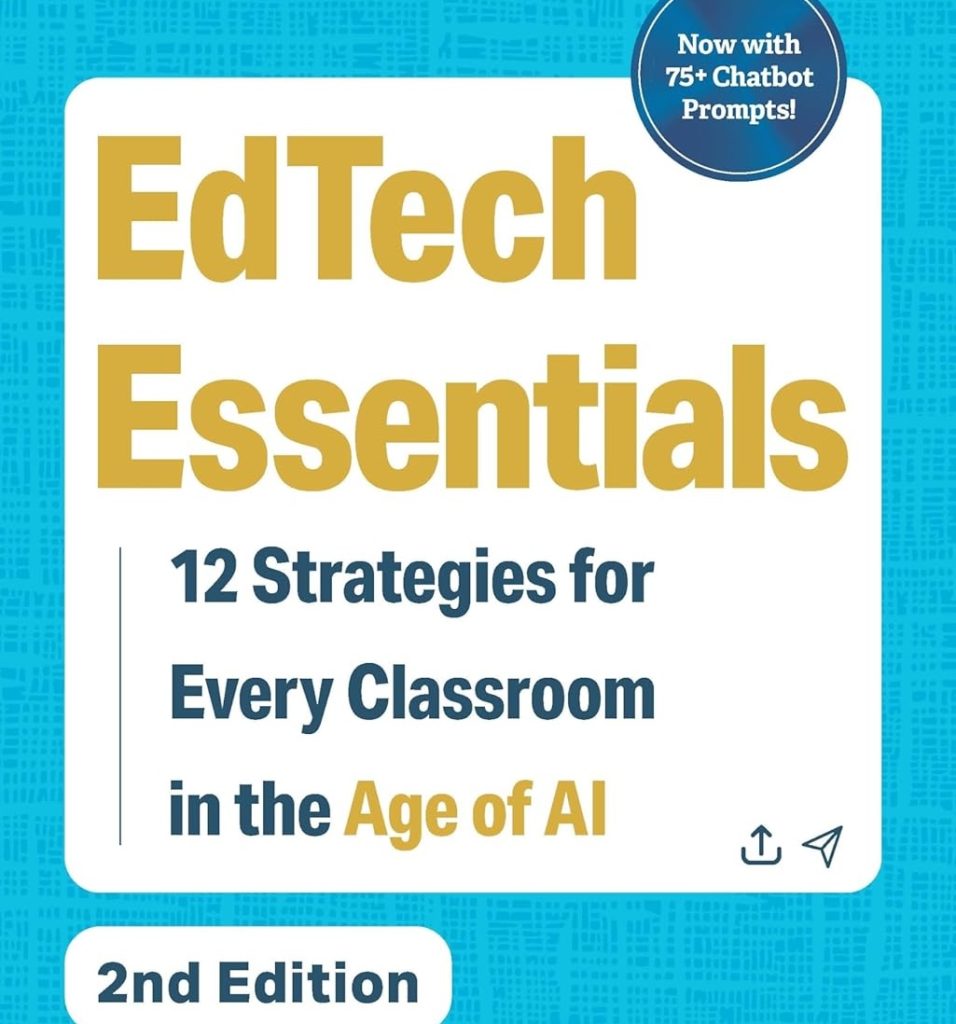
As long as humans have lived into their teens, adults have complained about their behavior. Aristotle famously described this age cohort as “fickle, passionate, irascible, and apt to be carried away by their impulses.” If your experience aligns with mine, you’ve seen your share of grouchy selfishness and demotivation in your classroom — especially before 10 am.
Although complaints about adolescents have been around as long as adolescence, those gripes have grown sharper in recent months. PANDEMIC this and CELL PHONE that and AI CHEATING to boot – all these additional concerns have ramped up adult exhaustion with teenage too-muchness.
Given this bleak outlook – both historic and contemporary – what’s a middle-school or high-school teacher to do?
Happily, noted researcher Dr. David Yeager has wise thoughts – and LOTS of research – to give us hope. His recent book 10 to 25: The Science of Motivating Young People will guide and inspire teachers and school leaders.
START HERE
Before getting to specific suggestions, Yeager wants us to rethink our starting point. Whereas Plato and others start with a “deficit mindset” – seeing only bad behavior and gloomy prognosis – Yeager wants us to see the strengths and potentials in humans between the ages of 10 and 25.

So, for instance: you’ll often hear that “the human pre-frontal cortex isn’t fully wired until people reach their mid to late 20s!” The implication of this claim: without this “self-control center” fully developed, young ‘uns are doomed to erratic and immature behavior.
Yeager, however, has a different perspective. This additional time for important brain regions to develop gives growing youth the chance to adapt to the ever-changing world. As the computer people say: the drawn-out schedule of brain development “isn’t a bug, it’s a feature!”
In Yeager’s analysis, most adults respond to this time period with some blend of expectations and support. But most of us get that blend wrong.
Specifically:
- Some of us default to HIGH expectations – but don’t offer much by way of support. It’s my way or the highway – and teens often find themselves out on that road. Yeager calls this blend the “enforcer” mindset.
- Others offer HIGH support – and don’t worry too much about expectations. Not wanting to make a difficult time even harder, we soften standards when they seem too onerous. Yeager thinks of these folks as having a “protector” mindset.
Perhaps you can anticipate Yeager’s next move.
- Adults with a “mentor” mindset balance HIGH expectations with HIGH support. This combination, in Yeager’s view, offers the best path to help adolescents navigate the 10-to-25 stage with optimal growth and development.
One of Yeager’s many strengths in this book: he doesn’t claim to be the only person to advocate for this “mentor mindset” balance. In fact, he carefully and respectfully charts the terminology that other scholars – Lewin, Baumrind, Scott – have used to describe these perspectives. I myself am likelier to take advice from scholars who conspicuously acknowledge their debts to others in the field; Yeager does just that.
WHAT TO DO
To help us translate this mentor’s mindset into specific action, Yeager outlines five broad approaches to help teens through these years: transparency, questioning, stress, purpose, and belonging. He devotes a chapter to each, offering both uplifting stories and scrupulous research to specify and support his case.
For instance, looks at the problem of stress – familiar to anyone dealing with emerging adults. We might, by way of shorthand, define stress as a situation where the DEMANDS of the moment exceed a student’s RESOURCES.
How might we respond?
- Those with an enforcer mindset say: “Deal with it. The demands are the demands, so get the job done – with whatever resources you have.”
- Those with a protector mindset say: “Well, that looks stressful. Let’s reduce the demands until the align with the resources you’ve got.”
- A mentor’s mindset would encourage a different approach: “Let me help you increase your resources so that they match the demands that you face.” The mentor doesn’t reduce the requirements of the moment, but helps develop the skills or knowledge necessary to face it.
Yeager then explores a body of research (by Jameison and others) showing how to boost resources.
Specifically, students who understand the evolutionary history of stress responses recognize that all those seemingly unpleasant symptoms – the sweaty palms, the stomach butterflies – signal helpful physiological responses.
Once students have this additional resource – the knowledge to reframe their physiological responses to stress – they can face the demands of the current situation.
Voila: a mentor’s mindset, combined with research, helps us coach and support a student through an age-appropriate challenge.
HESITATIONS?
I always think a book review should include a caveat or two, but 10 to 25 makes this belief something of a challenge. Yeager writes conversationally, keeps the jargon to a minimum, and modestly acknowledges the difficulties of applying research-based ideas to real-life situations. He even includes a chapter of guided practice to ensure the book’s suggestions take root.
My only consistent concern: as noted above, the book draws on both research and “uplifting” stories. More than most readers, perhaps, I find myself reacting to uplift with suspicion. An uplifting story is – from another perspective – simply an anecdote. I don’t think we should rely on anecdotes to make teaching decisions. And I especially resist stories about life far outside of school – say, in Microsoft training programs.
(I should say: I’m probably an outlier here. Many people find anecdotes a helpful way to translate research-y principles into real-life situations.)
This modest critique aside, Yeager’s book both explains and organizes lots of research. In this way, it helps teachers think differently about real challenges in our work, and gives us clear guidance about what to do.
If you wish you had a clearer set of principles to help motivate and support an emerging adult, Yeager’s book is for you.





